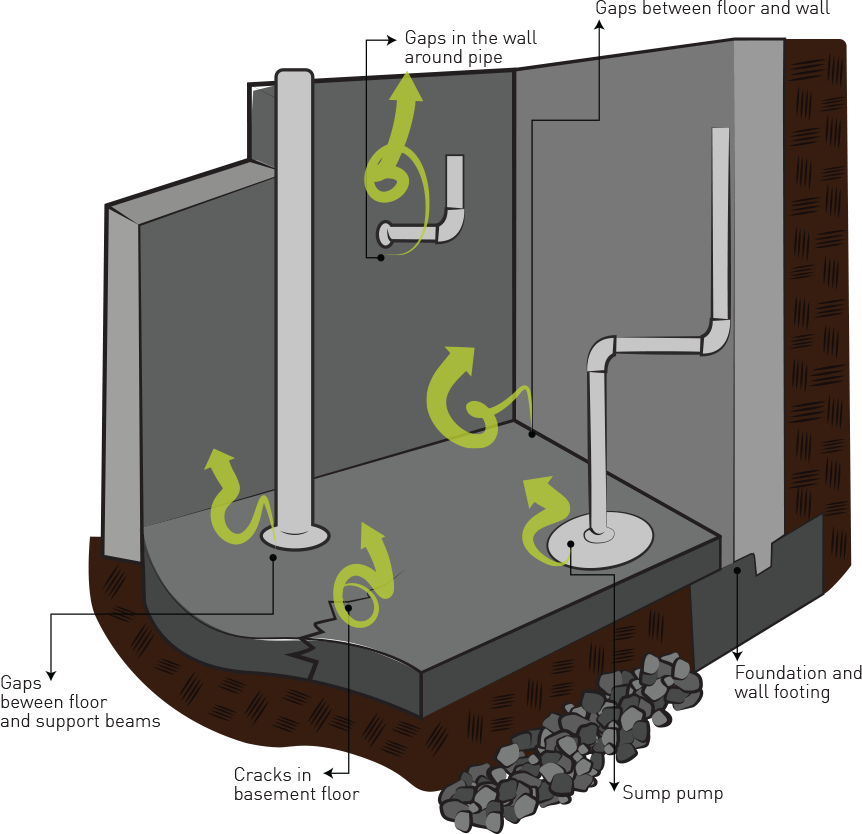US EPA
Is radon really bad for you?
Breathing radon over time increases your risk of lung cancer. Radon is the second leading cause of lung cancer in the United States. Nationally, the EPA estimates that about 21,000 people die each year from radon-related lung cancer. Only smoking causes more lung cancer deaths.
The first step in mitigation is evaluating to see if the domestic and/or indoor-air water radon concentrations ought to be reduced. The Globe Health and wellness Organization's International Radon Job has actually advised an action degree of 100 Bq/m3 (2.7 pCi/l) for radon in the air.
A lot of wellness and also radiation experts agree that while a small part of granite kitchen counters may release increased levels of radon, most kitchen counters produce very low degrees. According to the US Epa (EPA), it's very unlikely that a granite countertop in a residence would certainly enhance the radiation degree over the regular, natural history degree that comes from nearby dirt and rocks. Still, individuals concerned regarding radon from counter tops as well as from various other family resources can evaluate these degrees utilizing home detection packages or can work with a specialist to do the screening (see the section "Exactly how can I avoid direct exposure to radon?"). Words radon examination "fell short" or radon test "passed" are sprayed around.
Is radon mitigation really necessary?
When radon gas enters the body, it exposes the lungs to small amounts of radiation. In small quantities, experts say this is harmless. However, in persistent exposures or larger quantities, radon can damage the cells of the lining of the lungs, increasing a person's chance of developing lung cancer.
We stroll outside and also operate in the sunlight, subjecting ourselves to ultraviolet radiation and also enhancing our danger of developing skin cancer. We drive in autos virtually every day despite the fact that above 1 in 86 http://josueryhd944.bearsfanteamshop.com/oregon-wellness-authority fatalities is an outcome of automobile mishaps. People smoke, consume inadequately, as well as engage in hazardous habits daily. To some degree, radon gas is one more everyday threat that most of us need to take.

- Radon gas is a naturally-occurring by-product of the radioactive decay of Uranium in the soil.
- Depending on your geographical place, the radon levels of the air you take a breath beyond your house might be as high as 0.75 pCi/L.
- The US EPA has put it plainly, stating, "Any radon direct exposure has some risk of creating lung cancer cells.
For example, a person living in a home with a radon degree of 4.0 pCi/L or lower has a roughly 7 in 1000 chance of getting sick. On the various other hand, a person living in a home with a radon degree of 20 pCi/L or higher has a 36 in 1000 possibility of contracting lung cancer. The Globe Health And Wellness Company (WHO) developed an activity level of 2.7 pCi/L based upon a three-year worldwide research study by greater than 30 popular scientists.
Health
However, when radon gets entraped inside-- after entering a house with joints in wall surfaces, basement floors, structures and various other openings-- it might focus at harmful levels. Actually, radon is the second leading source of lung cancer cells, responsible for an approximated 21,000 fatalities every year in the USA, contributing to lung cancer cells's status as the # 1 cancer killer. When breathed in into the lungs, it can harm DNA and cause lung cancer. The EPA's advised degree for radon reduction is 4.0 pCi/L or over. It is however a worthy gas with no chemical fondness however is conveniently influenced by air motions and also pressure.
How long does it take for radon to cause cancer?
Fact: You will reduce your risk of lung cancer when you reduce radon levels, even if you've lived with an elevated radon level for a long time. Keep in mind that radon levels below 4 pCi/L still pose some risk and that radon levels can be reduced to 2 pCi/L or below in most homes.